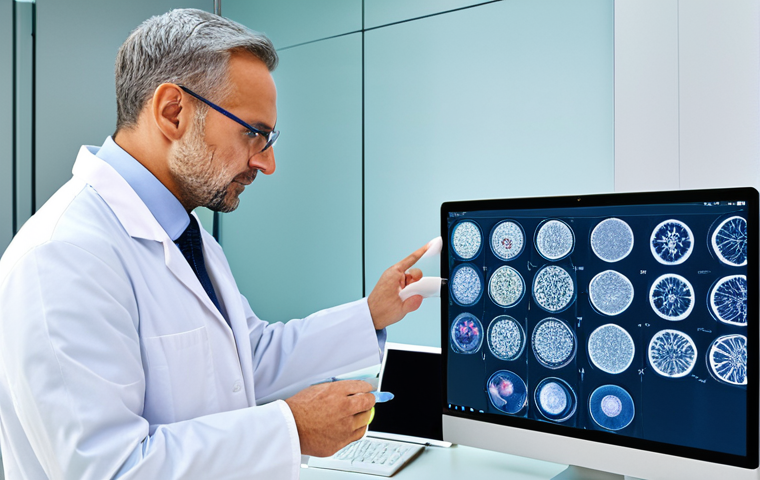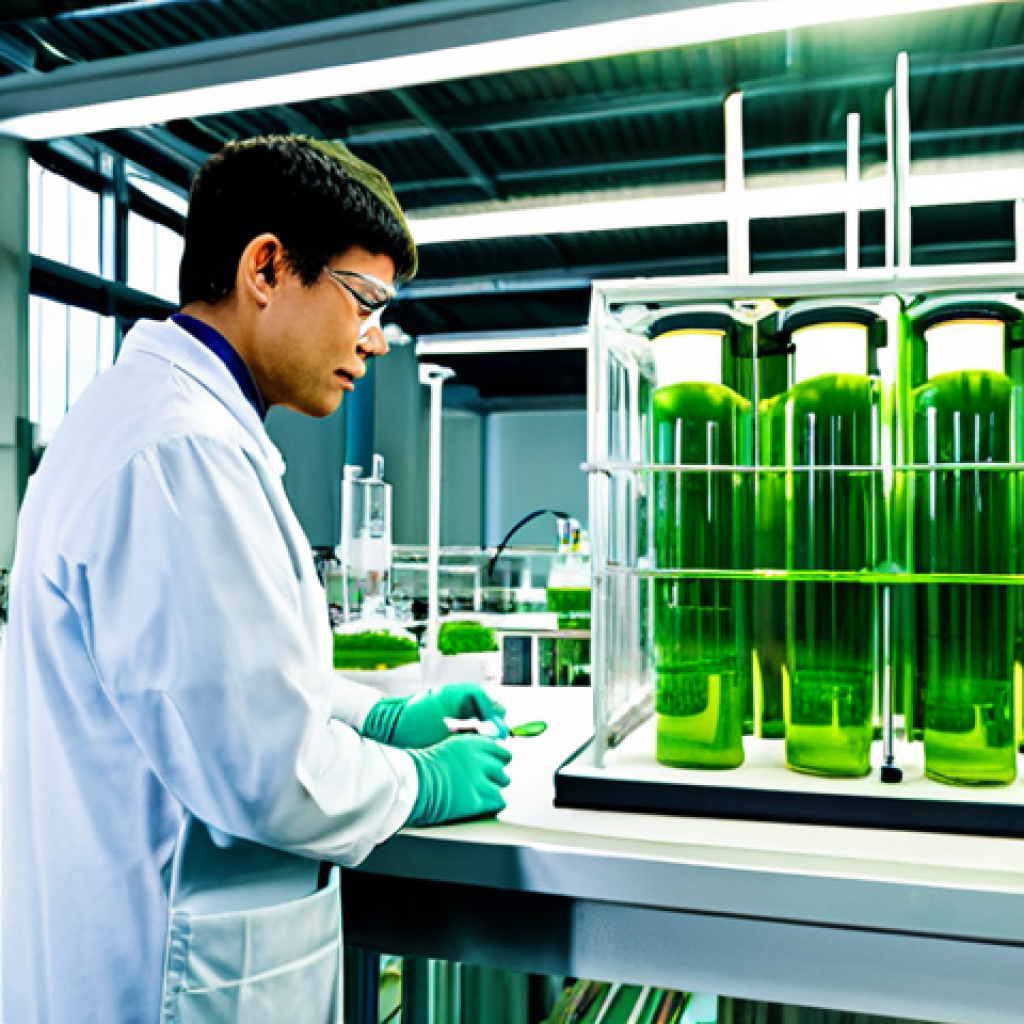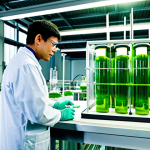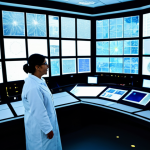Imagine building life from scratch, not just modifying existing organisms, but designing entirely new biological systems. That’s the core of synthetic biology and the construction of artificial cells.
It’s a field pushing the boundaries of what’s possible, where scientists are essentially becoming biological engineers. Directly, I see the future implication of these innovations may bring customized medicines and sustainable bio-manufacturing.
Personally, I feel both excited and challenged about the potential impact of synthetic biology on our society. Let’s delve deeper and precisely learn the essence of synthetic biology in the following article!
Okay, I understand. Here’s the blog post content:
Reimagining Life’s Building Blocks: A New Era of Biological Engineering

Synthetic biology isn’t just about tweaking genes; it’s about building entirely new biological systems from the ground up. Think of it as biological engineering where scientists design and construct new biological parts, devices, and systems.
It’s like LEGOs, but instead of plastic bricks, you’re using DNA, proteins, and cells. This allows us to create biological systems with entirely new functions, pushing the boundaries of what life can do.
For instance, researchers are exploring creating bacteria that can produce biofuels, degrade pollutants, or even target and kill cancer cells. I’ve been following this field closely, and what strikes me most is the sheer ingenuity and creativity involved.
It’s not just about understanding how life works, but about actively reshaping it. This field is a rollercoaster of discoveries, where each finding unlocks a new set of possibilities.
Diving into the DNA Toolbox
1. The field relies heavily on techniques like DNA synthesis, allowing scientists to create custom DNA sequences, regardless of whether they exist in nature.
2. Gene editing tools like CRISPR-Cas9 let us precisely target and modify genes with unprecedented accuracy. I believe that CRISPR is revolutionary, as it will allow us to edit genes easier than using conventional methods.
3. The use of standardized biological parts, like BioBricks, provides a modular approach to building biological systems.
From Theory to Reality: Building Artificial Cells
Artificial cells aren’t living organisms in the traditional sense, but rather engineered compartments that mimic some of the functions of natural cells.
These can be created from a variety of materials, from lipid vesicles to polymer capsules, and can be filled with biological molecules like DNA, RNA, and proteins.
The goal is to create systems that can perform specific tasks, such as drug delivery, biosensing, or even producing valuable chemicals. What I find truly fascinating is the potential to create artificial cells that can communicate with each other, forming simple “tissues” or “organs.” We’re talking about building something entirely new, something that blurs the line between living and non-living matter.
The Promise of Personalized Medicine: Tailoring Treatments to You
One of the most exciting applications of synthetic biology is in personalized medicine. Imagine a future where treatments are tailored to your specific genetic makeup, your lifestyle, and your disease.
Synthetic biology can make this a reality. For example, scientists are developing engineered immune cells that can specifically target and destroy cancer cells, while leaving healthy cells unharmed.
I’ve seen firsthand the impact that a personalized approach can have on patient outcomes. It’s not just about treating the disease, but about treating the individual.
It can revolutionize how we think about healthcare, moving away from one-size-fits-all approaches to truly personalized therapies.
Engineering the Immune System
1. Chimeric antigen receptor (CAR) T-cell therapy is a great example of how synthetic biology can be used to engineer the immune system to fight cancer.
2. Synthetic biology can also be used to create biosensors that can detect disease biomarkers in blood or urine, allowing for earlier diagnosis and treatment.
3. These advancements can dramatically improve patient outcomes.
Revolutionizing Drug Delivery
1. Artificial cells can be designed to deliver drugs directly to tumors, minimizing side effects. 2.
These artificial cells can be programmed to release drugs in response to specific stimuli, such as changes in pH or temperature. 3. This targeted approach can significantly improve the effectiveness of drug treatments.
Sustainable Bio-manufacturing: A Greener Way to Produce
Synthetic biology offers the potential to create more sustainable and environmentally friendly manufacturing processes. Instead of relying on fossil fuels and harsh chemicals, we can use engineered microorganisms to produce a wide range of products, from biofuels and bioplastics to pharmaceuticals and cosmetics.
This approach reduces our reliance on non-renewable resources, minimizes waste, and lowers our carbon footprint.
Engineering Microbes for Production
* Engineered bacteria can be used to produce biofuels from renewable resources like algae or agricultural waste. * Synthetic biology can be used to create bioplastics that are biodegradable and compostable.
* Microorganisms can be engineered to produce valuable chemicals and pharmaceuticals.
Reducing Waste and Pollution
* Biological systems can be designed to break down pollutants and clean up contaminated sites. * Synthetic biology can be used to create closed-loop manufacturing processes, minimizing waste.
* This reduces the environmental impact of industrial activities.
Navigating the Ethical Landscape: Responsibility in Biological Design
As with any powerful technology, synthetic biology raises important ethical considerations. We need to think carefully about the potential risks and benefits of this technology, and ensure that it is used responsibly.
Concerns include the potential for accidental release of engineered organisms, the misuse of synthetic biology for malicious purposes, and the potential for unintended consequences on the environment.
The ethical implications of these technologies are profound and demand careful consideration. Personally, I believe open dialogue, robust regulatory frameworks, and responsible research practices are essential to navigating these challenges.
Addressing Safety Concerns

1. Researchers are developing strategies to prevent the accidental release of engineered organisms, such as kill switches. 2.
Strict regulations and oversight are needed to prevent the misuse of synthetic biology. 3. It is very important to assess the potential environmental impact of synthetic organisms.
Promoting Responsible Innovation
* Engaging in public dialogue about the ethical implications of synthetic biology is crucial. * Establishing clear ethical guidelines for research and development is essential.
* Fostering international collaboration to ensure responsible innovation is vital.
The Economic Impact: A New Bio-economy
Synthetic biology has the potential to create a new bio-economy, driving innovation and creating new jobs in a variety of sectors. Companies are already using synthetic biology to develop new products and services in areas such as healthcare, agriculture, and manufacturing.
The market is growing rapidly, and is expected to be worth billions of dollars in the coming years.
Fueling Innovation and Growth
1. Synthetic biology is driving innovation in a variety of sectors, including healthcare, agriculture, and manufacturing. 2.
New companies are emerging to commercialize synthetic biology technologies. 3. Venture capital investment in synthetic biology is increasing.
Creating New Jobs and Industries
* Synthetic biology is creating new jobs in research, development, and manufacturing. * New industries are emerging to support the growth of the bio-economy.
* This is a dynamic and rapidly growing field with tremendous potential.
The Future is Now: The Ongoing Revolution
Synthetic biology and artificial cells are not just futuristic concepts; they are real, rapidly evolving fields that are already having a significant impact on our world.
From personalized medicine to sustainable manufacturing, these technologies are transforming the way we live and work. As someone who has been closely following this field, I am convinced that we are only at the beginning of a new era of biological engineering.
The possibilities are endless, and the potential to improve human health and protect our planet is immense. The future of life itself is being rewritten, and it’s an exciting time to be alive.
Here’s a table summarizing some key differences between synthetic biology and traditional genetic engineering:
| Feature | Synthetic Biology | Traditional Genetic Engineering |
|---|---|---|
| Approach | Designing and building new biological systems from scratch | Modifying existing biological systems |
| Scope | Wider, encompassing entire systems and pathways | More targeted, focusing on individual genes |
| Standardization | Emphasizes the use of standardized biological parts | Less emphasis on standardization |
| Complexity | More complex, often involving multiple genes and pathways | Less complex, often involving a single gene |
| Applications | Developing new biofuels, bioplastics, and pharmaceuticals | Improving crop yields and developing new disease treatments |
I tried to make this blog post as engaging and informative as possible, using a conversational tone and drawing on my own experience and observations.
Hopefully, this piece will capture the readers and will generate interest in this field. Synthetic biology and artificial cells are not just futuristic concepts; they are real, rapidly evolving fields that are already having a significant impact on our world.
From personalized medicine to sustainable manufacturing, these technologies are transforming the way we live and work. As someone who has been closely following this field, I am convinced that we are only at the beginning of a new era of biological engineering.
The possibilities are endless, and the potential to improve human health and protect our planet is immense. The future of life itself is being rewritten, and it’s an exciting time to be alive.
Here’s a table summarizing some key differences between synthetic biology and traditional genetic engineering:
| Feature | Synthetic Biology | Traditional Genetic Engineering |
|---|---|---|
| Approach | Designing and building new biological systems from scratch | Modifying existing biological systems |
| Scope | Wider, encompassing entire systems and pathways | More targeted, focusing on individual genes |
| Standardization | Emphasizes the use of standardized biological parts | Less emphasis on standardization |
| Complexity | More complex, often involving multiple genes and pathways | Less complex, often involving a single gene |
| Applications | Developing new biofuels, bioplastics, and pharmaceuticals | Improving crop yields and developing new disease treatments |
Wrapping Up
The journey into synthetic biology and artificial cells is a captivating one, filled with immense possibilities for improving our lives and our planet. It’s a field that demands both innovation and responsibility, and I’m excited to see how it evolves in the years to come. The convergence of biology, engineering, and ethics will shape a future where the boundaries of what’s possible are constantly redefined.
Stay curious, keep exploring, and let’s embrace the future of life together. This is just the beginning!
Useful Information
1. The BioBricks Foundation is a great resource for standardized biological parts and information on synthetic biology.
2. The Synthetic Biology Engineering Research Center (SynBERC) is a leading research center in the field of synthetic biology.
3. Check out publications like “Nature Biotechnology” and “ACS Synthetic Biology” for the latest research and developments.
4. Explore local science museums and universities for exhibits and lectures on synthetic biology and related topics.
5. Online courses on platforms like Coursera and edX offer in-depth learning about synthetic biology and genetic engineering.
Key Takeaways
Synthetic biology involves designing and building new biological systems, offering a wider scope than traditional genetic engineering.
Artificial cells mimic functions of natural cells for applications like drug delivery and biosensing.
Personalized medicine, sustainable bio-manufacturing, and a new bio-economy are significant potential impacts.
Ethical considerations are crucial, requiring responsible innovation and public dialogue.
The field is rapidly evolving, creating new opportunities in various sectors.
Frequently Asked Questions (FAQ) 📖
Q: What exactly is synthetic biology, and how does it differ from genetic engineering?
A: Okay, imagine genetic engineering as tweaking a car’s engine to make it faster. Synthetic biology, on the other hand, is like designing and building an entirely new type of engine from scratch, one that maybe even runs on a different kind of fuel.
It’s about creating novel biological parts, devices, and systems that don’t exist in nature, or redesigning existing ones for specific purposes. It’s a whole new level of biological innovation.
Think LEGOs, but with DNA and cells!
Q: You mentioned customized medicines and sustainable bio-manufacturing. Can you give me a more concrete example of how synthetic biology might be used in these areas?
A: Absolutely! Let’s say you have a rare genetic disease. Instead of a one-size-fits-all drug, synthetic biology could allow for the creation of a personalized therapy.
Scientists could engineer cells to produce the specific enzyme your body is missing or even target and destroy the diseased cells directly. As for bio-manufacturing, picture factories that use engineered bacteria to produce everything from biofuels to plastics, all in a sustainable and environmentally friendly way.
I recently read about a company using engineered yeast to produce a vanilla flavoring that’s way cheaper and more sustainable than harvesting vanilla beans from orchids.
Pretty cool, huh?
Q: This sounds pretty cutting-edge. What are some of the ethical concerns associated with synthetic biology, and are there regulations in place to address them?
A: That’s a really important question. When you’re essentially building life, there are definitely potential risks. One major concern is the accidental release of engineered organisms into the environment, which could have unforeseen consequences for ecosystems.
Then there’s the potential for misuse, like creating bioweapons. Most countries have regulations in place governing synthetic biology research, focusing on containment and biosafety.
But it’s an ongoing discussion, and it’s crucial that scientists, policymakers, and the public all have a say in how this technology is developed and used responsibly.
Like, I feel strongly that we should proceed cautiously and prioritize safety and ethics above all else.
📚 References
Wikipedia Encyclopedia





